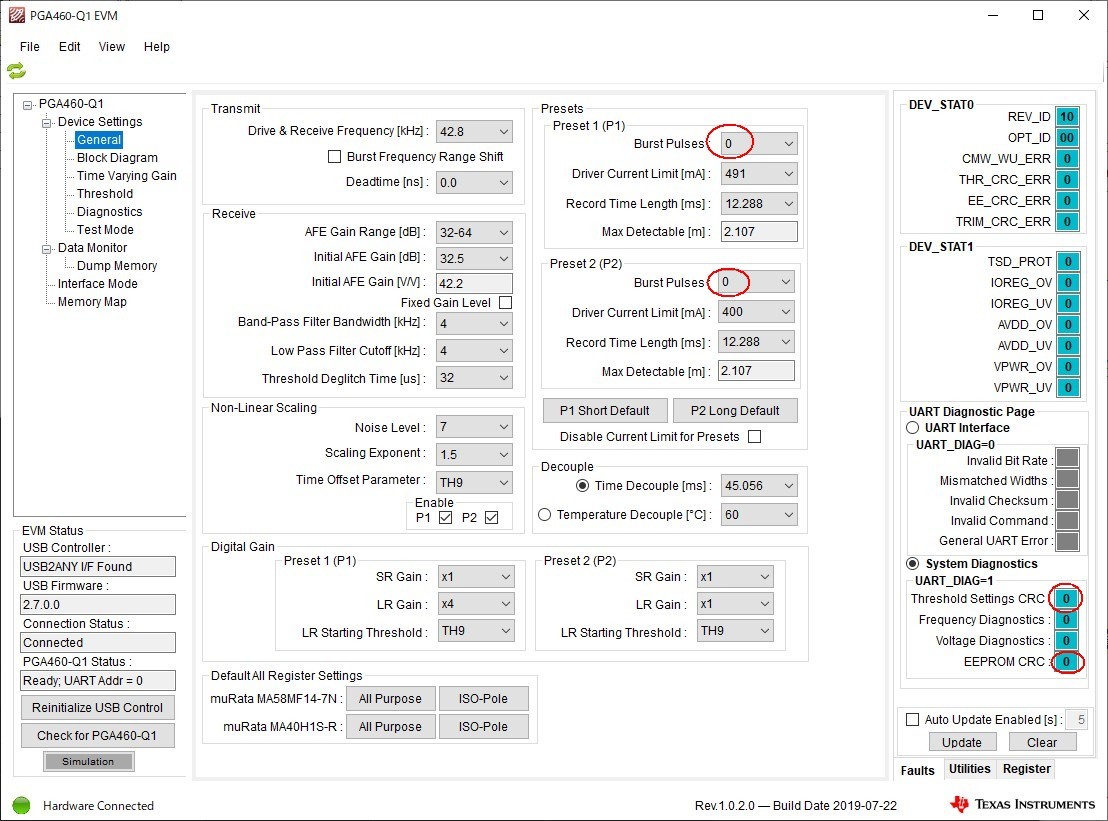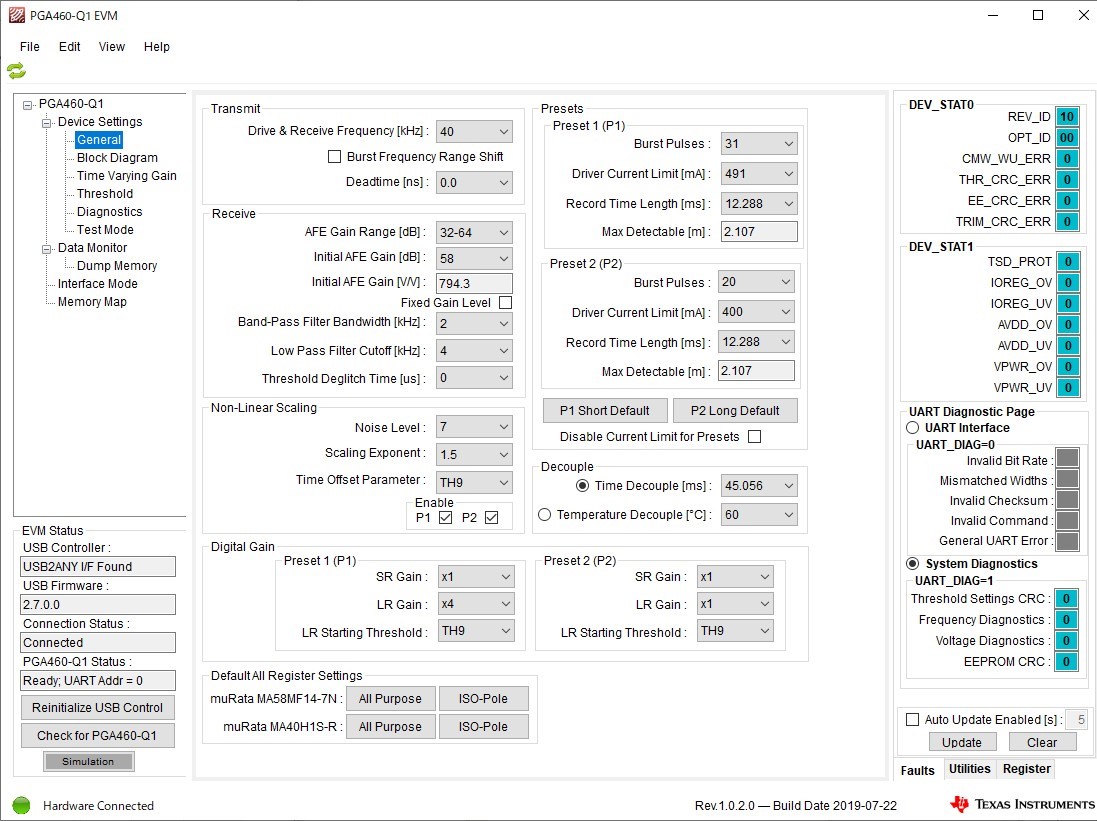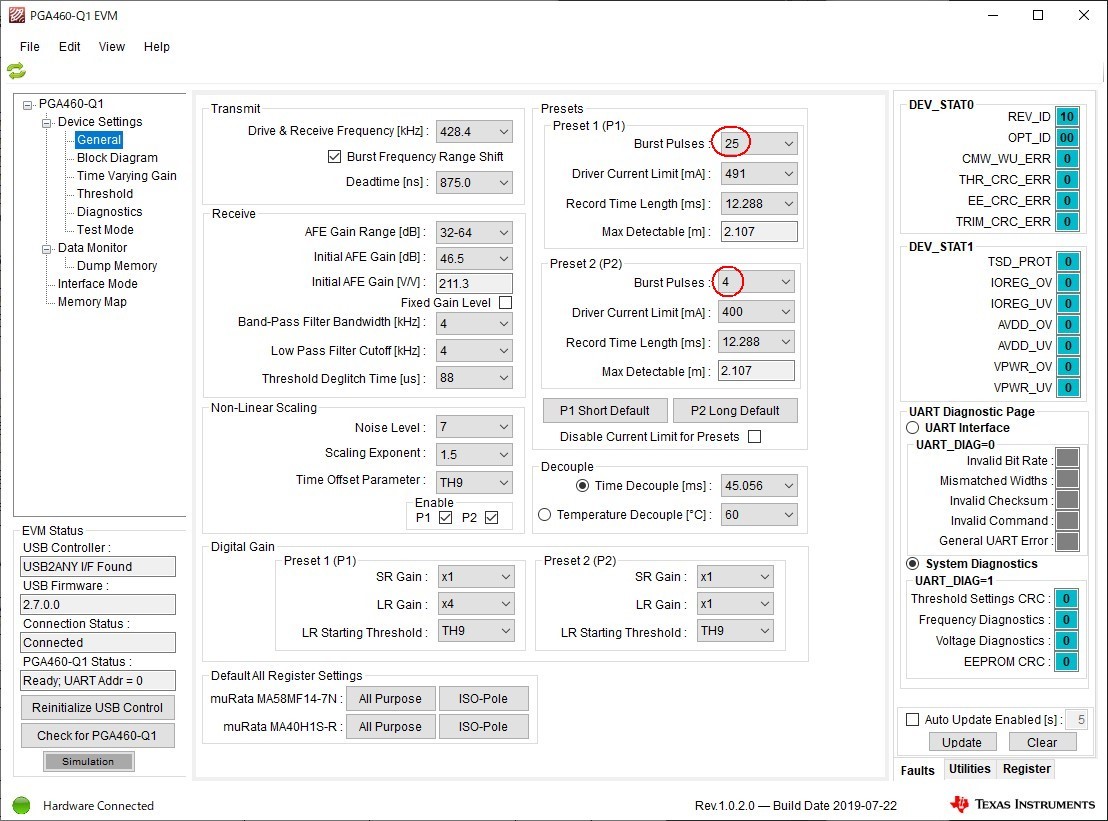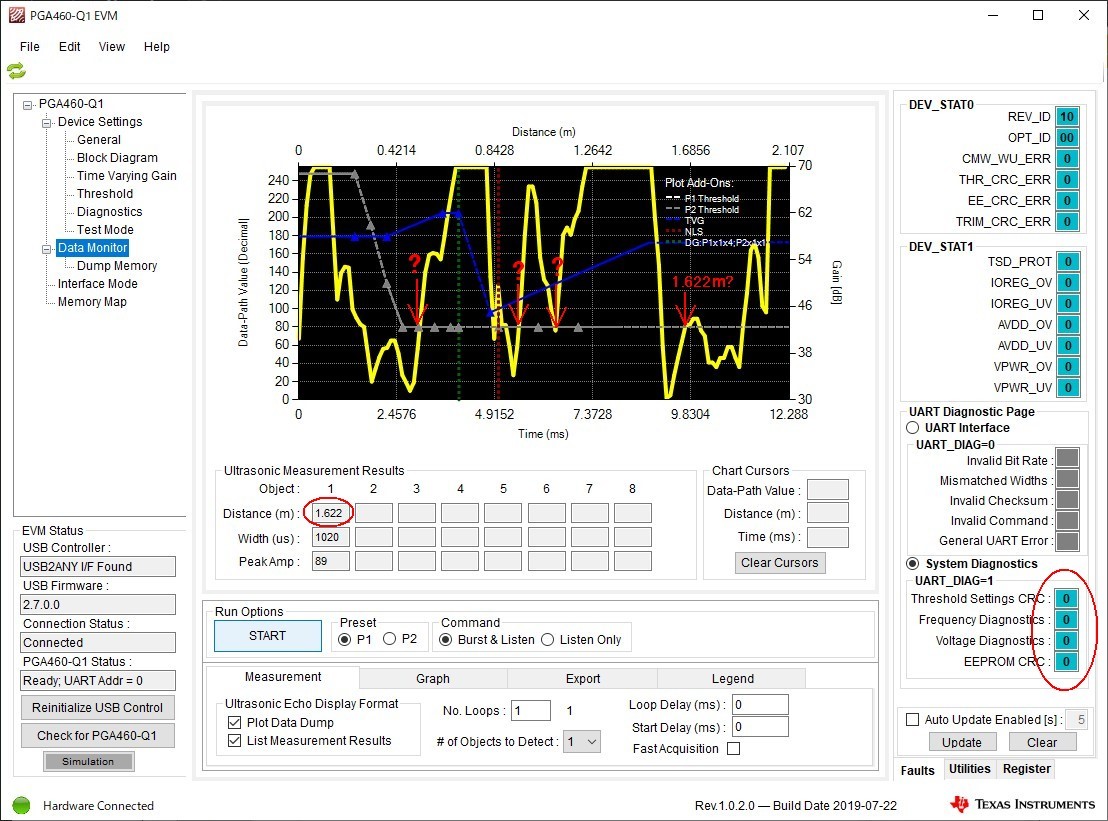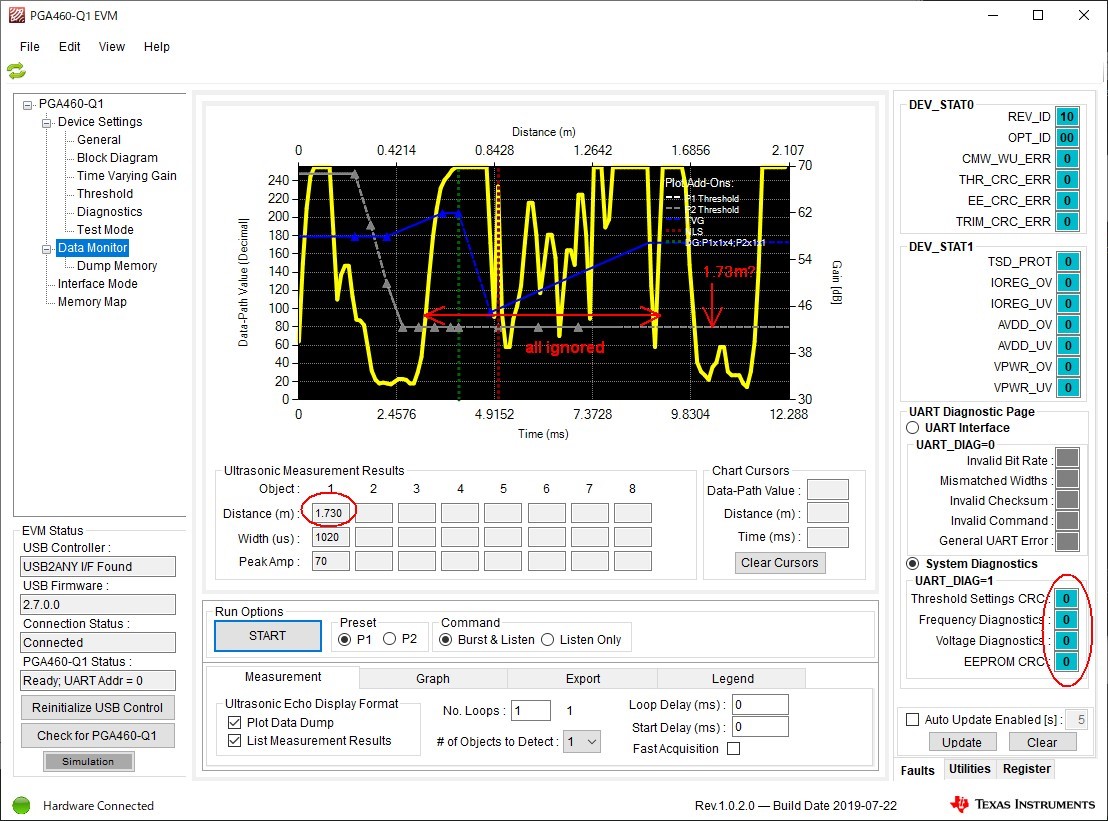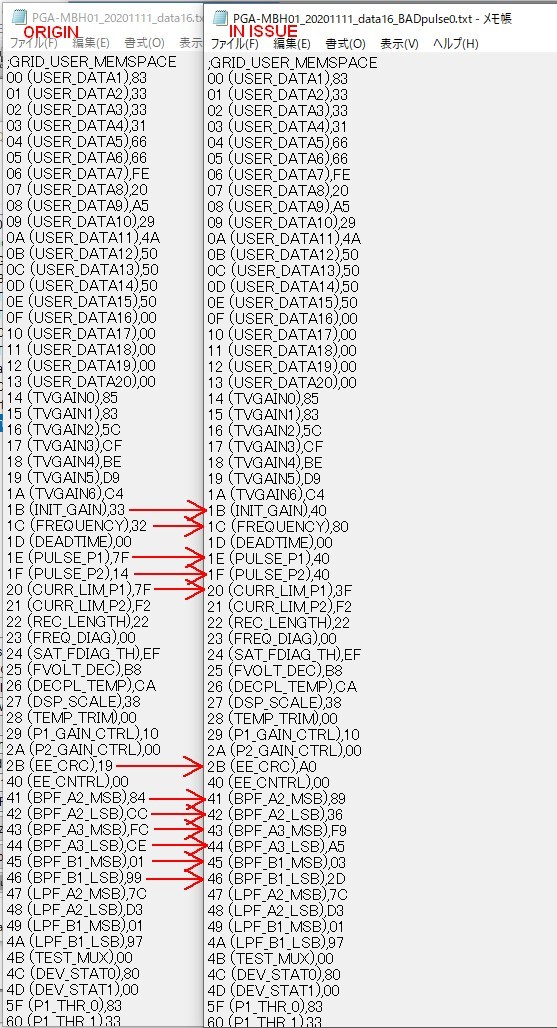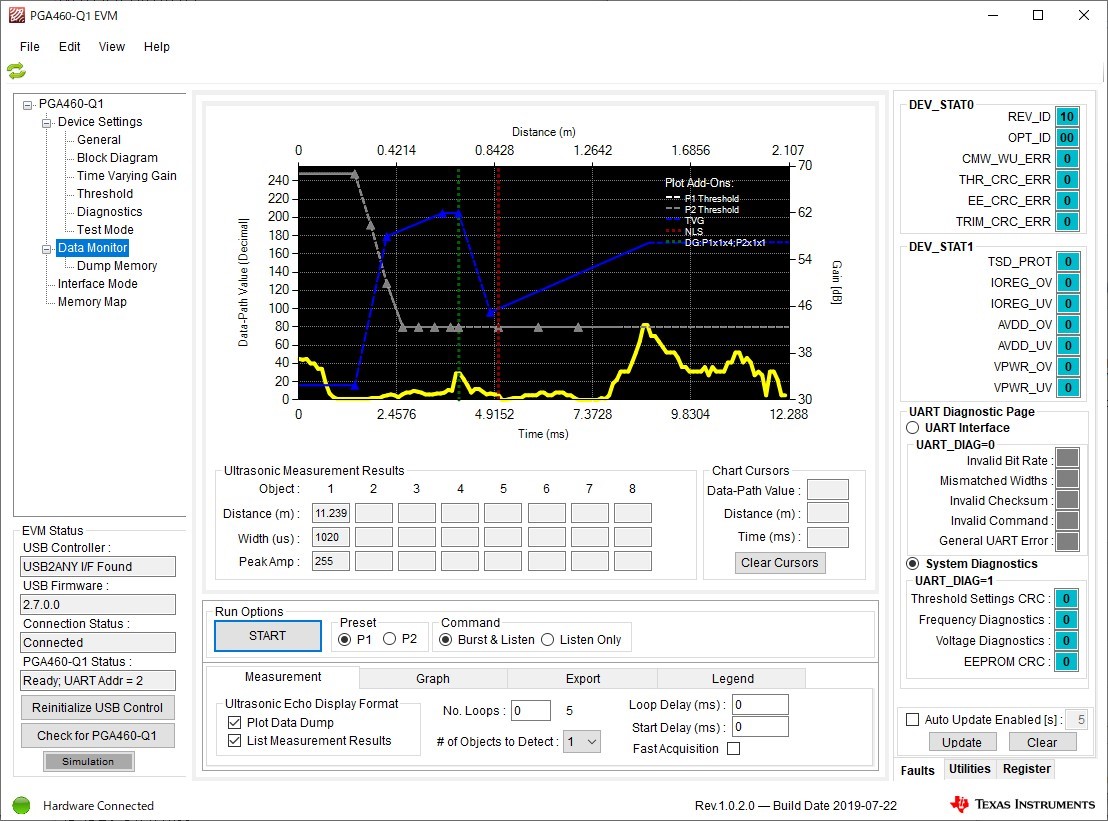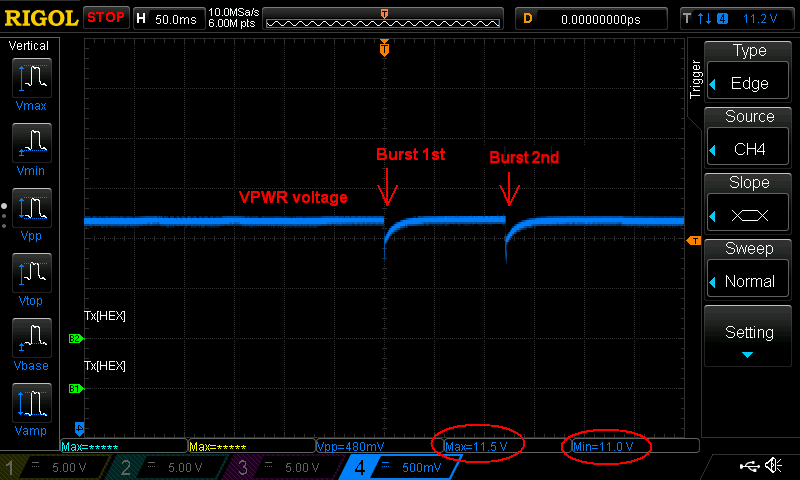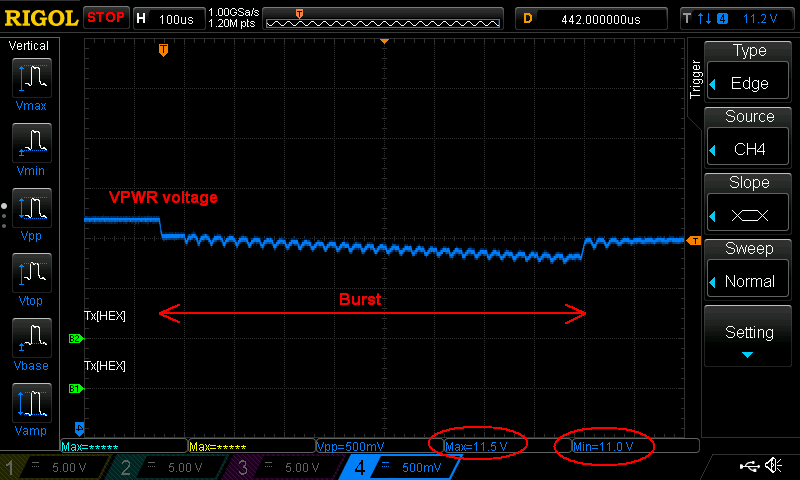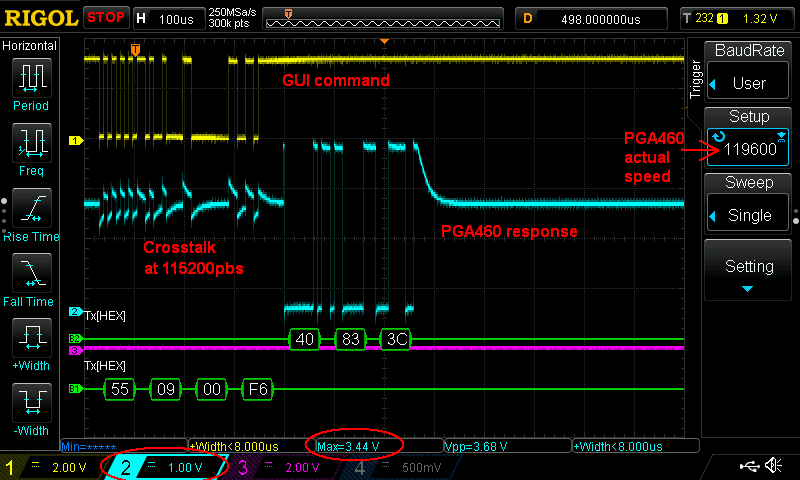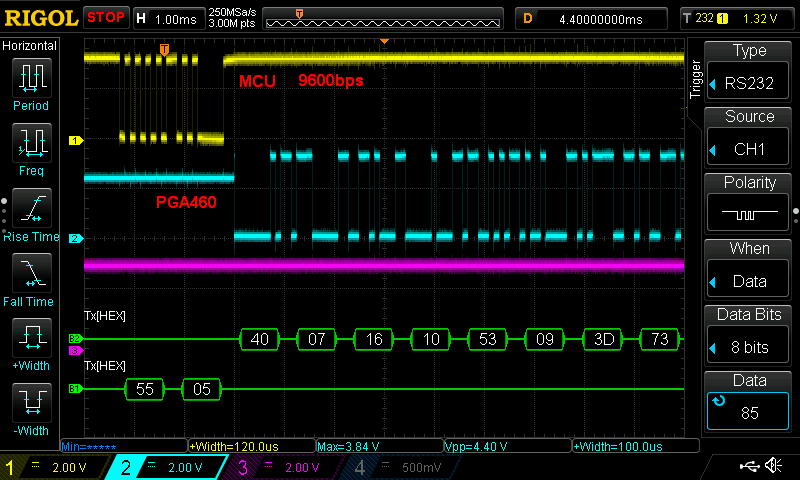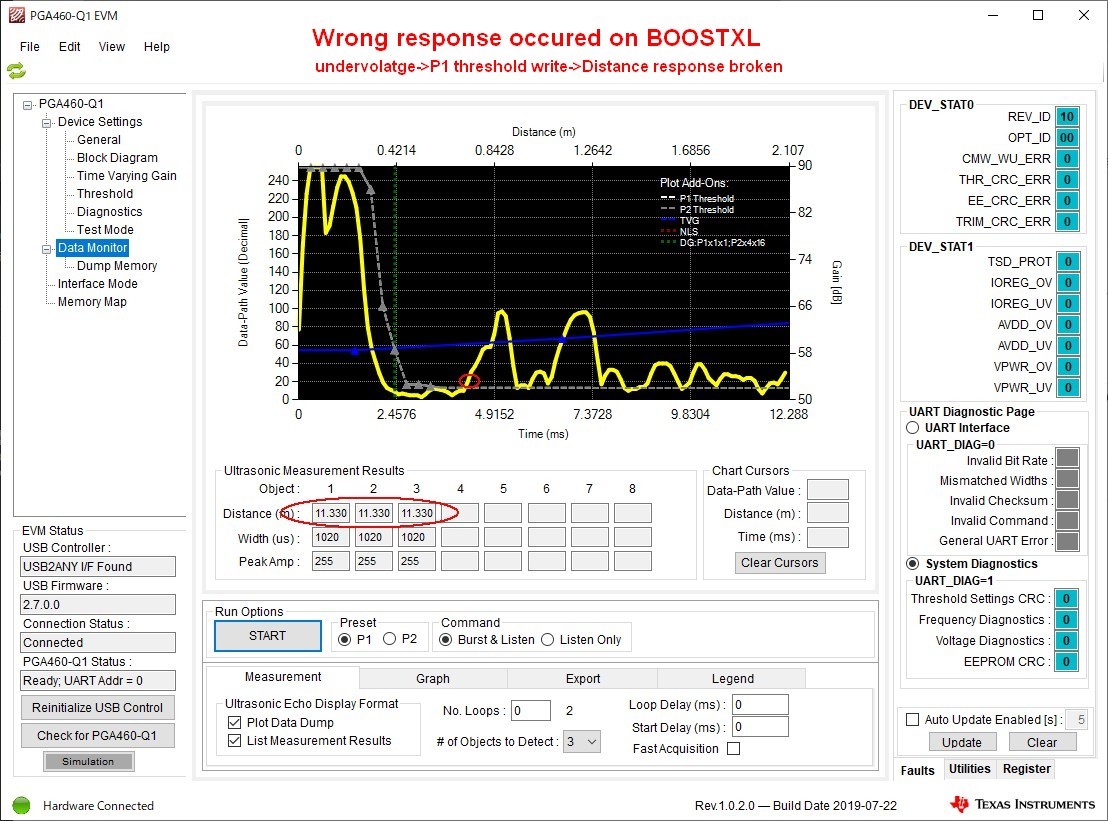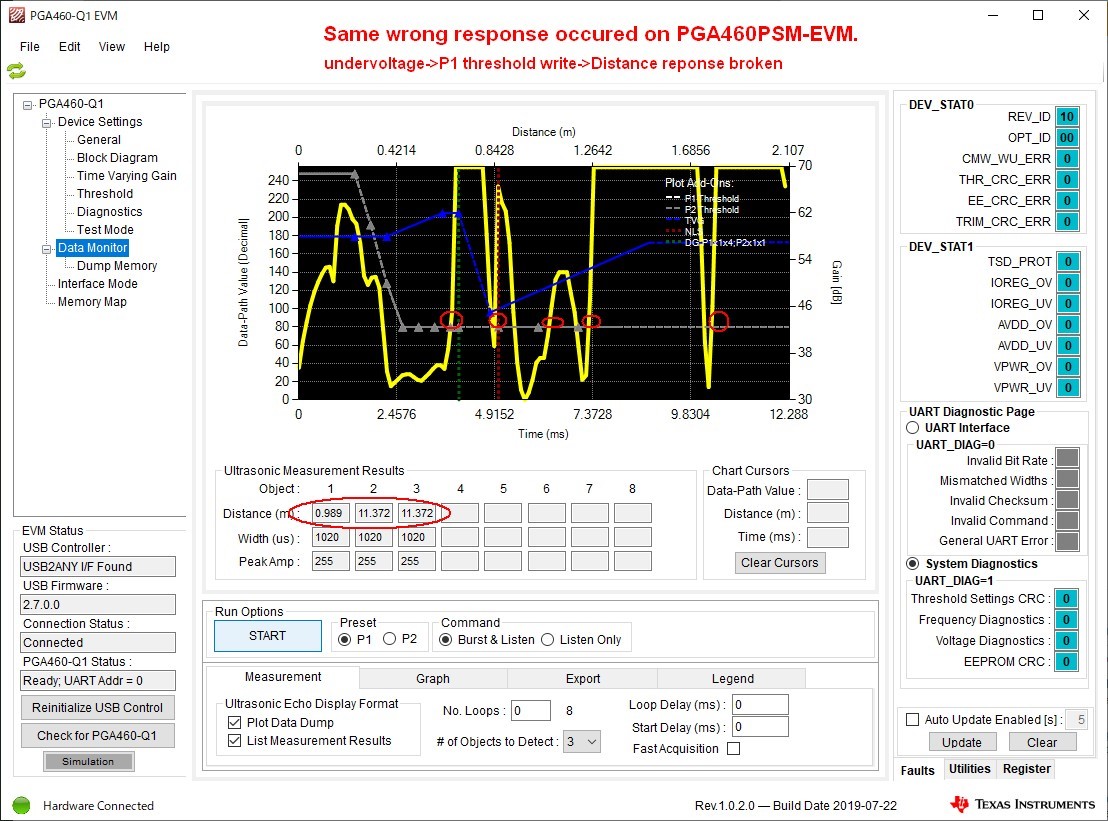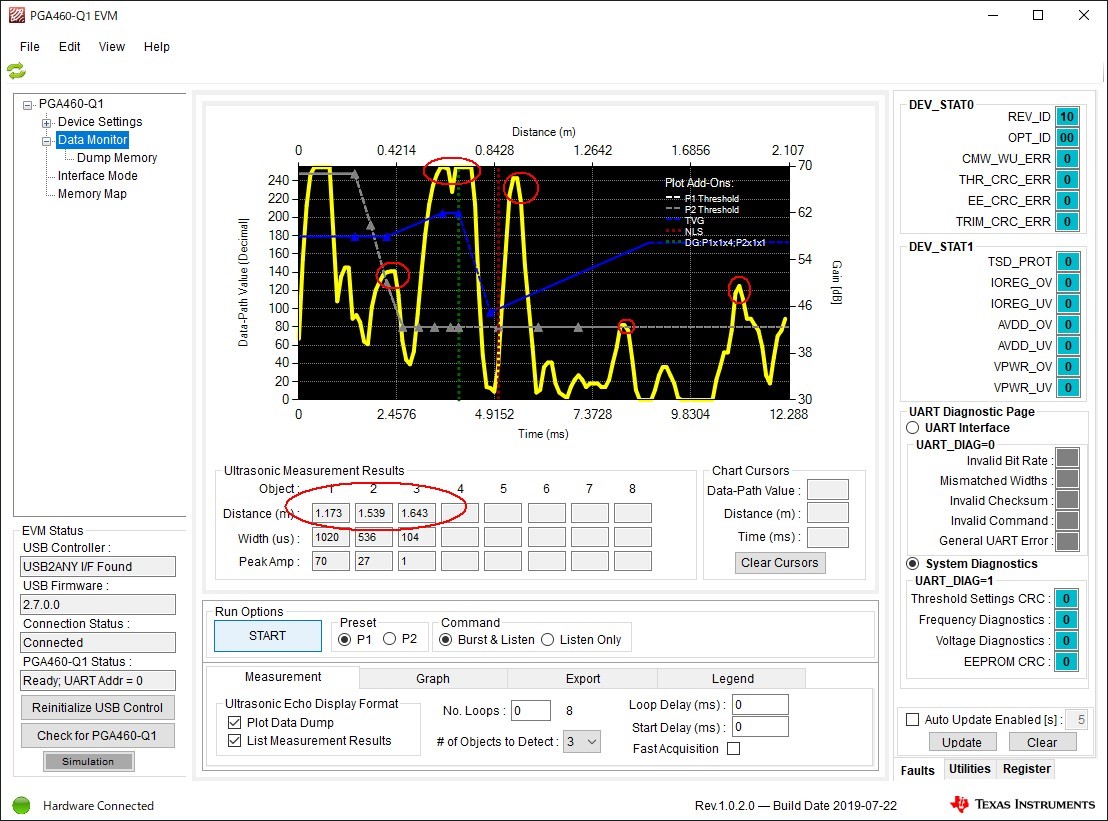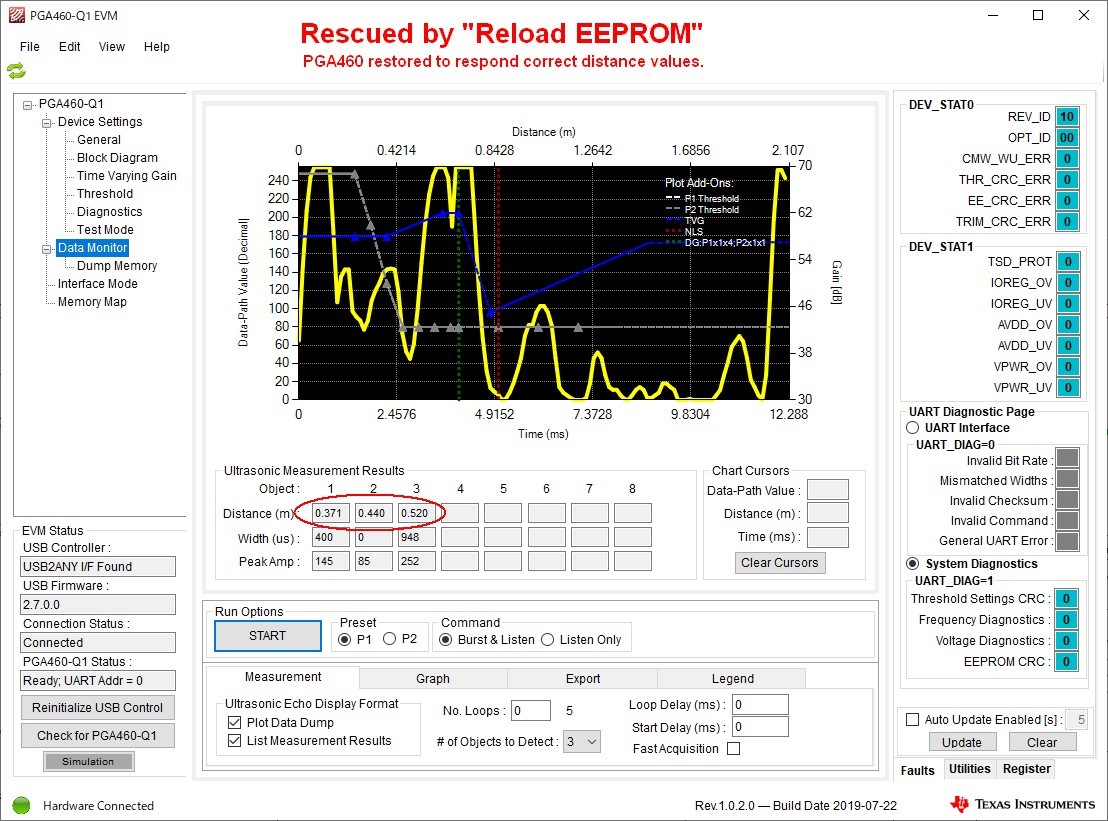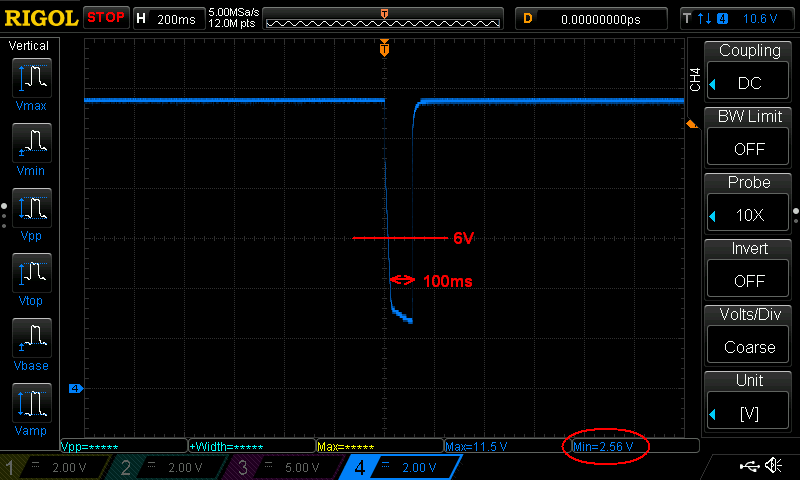Other Parts Discussed in Thread: PGA460, , MSP-EXP430F5529LP, PGA460PSM-EVM
Hello,
I faced a strange reaction when PGA460 power is interrupted for a short while.
It looses burst pulse numbers of both P1 and P2 however all CRC errors are clear and all other settings are kept correct.
This problem occurred in actual product often and PGA460 keeps running with strange measurement results.
It does not report any error in the first byte of the response UART_DIAG1.
Although, even if error flag was stated, there is no UART command to reload them from EEPROM.
Q1. Does the threshold bulk write command let the PGA460 to reload all registers from EEPROM?
I found this issue by stopping the MCU when strange measurement occurred after power interruption and connect the UART wire from LaunchPad then pressing "Check for PGA460-Q1" button in GUI.
As much as I see errors in GUI by that, VPWR_UV flag in DEV_STAT1 is not stated.
MCU does not read DEV_STAT1 register. So GUI is the first reader of VPWR_UV thus it is not cleared before GUI reads.
There seems to be no communication can notice this issue.
Q2. How should I detect and resque from it?
My guess of issue reason is the burst current.
I checked if same register vanishment happens by turning down the power voltage to lower than 6V from 12V slowly but it didn't happen, even though error flags of under voltages and threshold CRC error are stated.
The difference of situation was that I checked it while PGA460 is idle, not bursting.
Then the vanishment is scanned while PGA460 in burst and listen cycle, as I mentioned above. So I guess burst current is causing the vanishment of burst pulses number register values.
It occurres above under voltage, before threshold memory disappears, behind any error flag.
Please trace 3 screen captures.
1st, lost burst numbers and no CRC error alarted:
2nd, original correct settings:
3rd, burst pulses number left random instead of 0 sometimes:
All other values are kept but only burst pules numbers are lost.
Please help.
Best Regards,
Andy


